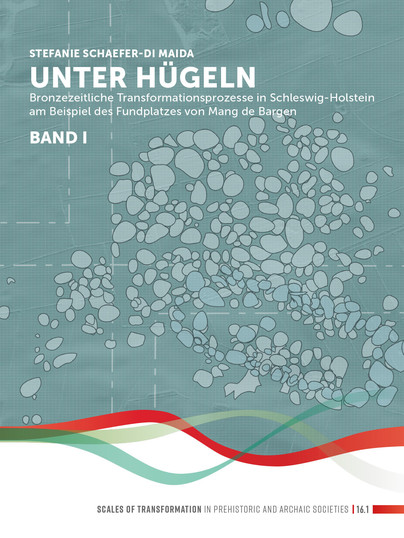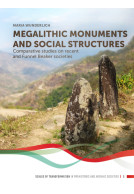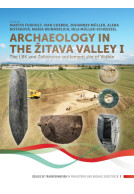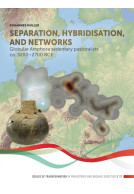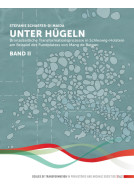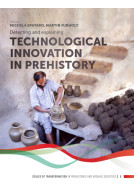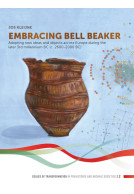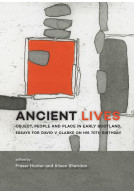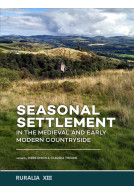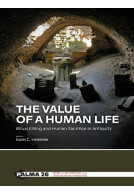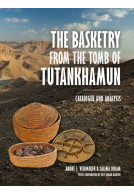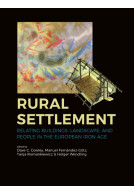Google Books previews are unavailable because you have chosen to turn off third party cookies for enhanced content. Visit our cookies page to review your cookie settings.
Unter Hügeln (band 1) (Hardback)
Bronzezeitliche Transformationsprozesse in Schleswig-Holstein am Beispiel des Fundplatzes von Mang de Bargen (Bornhöved, Kr. Segeberg)
Imprint: Sidestone Press
Series: Scales of Transformation
Pages: 538
Illustrations: 164fc / 9 bw
ISBN: 9789464280494
Published: 25th April 2023
Script Academic & Professional
Series: Scales of Transformation
Pages: 538
Illustrations: 164fc / 9 bw
ISBN: 9789464280494
Published: 25th April 2023
Script Academic & Professional
You'll be £150.00 closer to your next £10.00 credit when you purchase Unter Hügeln (band 1). What's this?
+£4.99 UK Delivery or free UK delivery if order is over £40
(click here for international delivery rates)
Order within the next 1 hour, 50 minutes to get your order processed the next working day!
Need a currency converter? Check XE.com for live rates
(click here for international delivery rates)
Order within the next 1 hour, 50 minutes to get your order processed the next working day!
Need a currency converter? Check XE.com for live rates
Mit der Bronzezeit verbreitete sich das begehrte neue Metall über ganz Europa. Es veränderte Arbeitssektoren, Netzwerke, Weltanschauungen und Gesellschaften und brachte unterschiedliche Transformationen in diversen Lebensbereichen mit sich. Mit diesem Buch werden alle Transformationsprozesse der Bronzezeit für den Raum Schleswig-Holstein in den Blick genommen.In diesem Forschungsrahmen entwickelte sich die Fundstelle Mang de Bargen bei Bornhöved (Kreis Segeberg), einst Ziel von Kieswerken, zu einer der bestdatierten bronzezeitlichen Fundstelle in Schleswig-Holstein. Das Gräberfeld wurde vom Spätneolithikum bis in die vorrömische Eisenzeit als Bestattungsplatz genutzt. Während dieser langen Nutzungszeit lassen sich mehrere kulturelle Veränderungen, wie Bestattungsriten, Grabausstattungen und weitere Aktivitäten, nachweisen. Die konsistente Datierung fast aller Gräber erlaubt es insbesondere, den Zeitpunkt des Übergangs von der Körper- zur Brandbestattung und den Übergang von Grabhügeln mit Baumsärgen zum Beginn der Verwendung von Urnen in Norddeutschland genau zu bestimmen.Anthropologische Analysen der Brandgräber aus Mang de Bargen und anderen Fundorten in der Region geben auch Aufschluss über die altersbedingte Platzierung und Ausstattung, was wiederum zu neuen Diskussionen anregt. Ein Vergleich mit Umweltdaten (Archäobotanik und Palynologie) zeigt zudem das Ausmaß des menschlichen Einflusses im Vergleich zu den archäologischen Untersuchungen. Die Einbeziehung von Daten zu Gräbern, Horten und Siedlungen für ganz Schleswig-Holstein ermöglicht die Einbettung dieses vollständig untersuchten Gräberfeldes und zeigt, wie und wie unterschiedlich sich Transformationsprozesse auf lokaler, regionaler und überregionaler Ebene manifestierten.Band 1 umfasst den Haupttext, den Befundkatalog, die Gesamtplana, die Hauptprofile, die Datierungsergebnisse und die vorläufigen Ergebnisse der anthropologischen Voruntersuchungen.English abstractDuring the Bronze Age the new, eponymous, highly-desired metal spread widely across Europe. It changed labour sectors, networks, worldviews and societies, and brought with it different transformations in diverse areas of life and death. With this book, all changes from the Bronze Age for the area of Schleswig-Holstein were put under the spotlight.In this framework of research, the Mang de Bargen site near Bornhöved (district of Segeberg), once the target of gravel works, developed into one of the best-dated Bronze Age sites in Schleswig-Holstein. The cemetery was used from the Late Neolithic to the Pre-Roman Iron Age as a burial site. During this long period of use, several cultural changes, including burial rites, grave furnishings, and further activities, can be traced. The rigorous dating of almost all of the graves allows, in particular, the precise identification of the moment of transition from inhumation to cremation, as well as the shift from burial mounds with log coffins to the beginning of the use of urns in northern Germany.Anthropological analyses of the cremations from Mang de Bargen and other sites in the area also reveal the age-related placement and furnishings, which might in turn stimulate new discussions. A comparison with environmental data (archaeobotany and palynology) also shows the scope of human impact in comparison to the archaeological investigations. The inclusion of data on graves, hoards, and settlements for the whole of Schleswig-Holstein enables this fully-investigated cemetery to be contextually embedded, and shows how — and how differently — transformation processes manifested themselves at local, regional, and supra-regional levels.Volume 1 comprises the main text, the feature catalogue, the site plans, the main site profiles, the results of the radiometric dating and the interim results of the preliminary anthropological investigations.
Other titles in the series...
Other titles in Sidestone Press...







